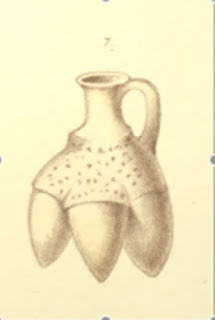It is because sometimes small, seemingly innocuous, innocent and meaningless things take some time to reveal themselves for what they really are that I find myself writing about the fabulous, inspirational qualities of a small song thrush and an "Obama for President" t-shirt because I believe these items to be the most recent items in the collections which may have changed the future for two people in Leeds.
We recently took an enquiry from a life coach who asked if we had any birds "which don't move" in order to try and help a client with, what transpired to be, a crippling fear of all things avian. With special permission to allow the gloved client to stroke the taxidermy (sufficiently robust specimens only), we embarked on a journey of discovery into what it was about birds which caused the problem.
 Needless to say, on account of not wanting to completely terrify anyone, we did not go into the museum store but instead, I spent a happy hour going backwards and forwards extracting various specimens including a badly painted iguana (to see if staring, black eyes in other creatures was the problem) and some bird skulls (to show how different bird beak equipment is adapted to the primary function of finding food in order to stay alive).
Needless to say, on account of not wanting to completely terrify anyone, we did not go into the museum store but instead, I spent a happy hour going backwards and forwards extracting various specimens including a badly painted iguana (to see if staring, black eyes in other creatures was the problem) and some bird skulls (to show how different bird beak equipment is adapted to the primary function of finding food in order to stay alive).
As someone who regularly suggests to children that the things in LMDC store may come to life at night, this was one time I kept my mouth firmly shut, watching the counsellor ply her trade and was very glad that there was no sign of tweeting, flapping, ruffling or pecking, enabling the client to move (from their own reckoning) from a 9/10 fear rating a the start of the session to a 5/10 at the end.
I must admit that seeing a grown adult recoil with such horror when the birds were first put down on the table in front of them was a sobering and uncomfortable experience tempered only by the thought that his was an odd but extremely worthwhile use of the collections. Watching as the client was slowly able to relax, move the bird closer and eventually reach out a gloved hand gently to stroke the feathers and appreciate some of the beauty of the shapes, colours and patterns was, for me, a "Kodak" moment.
The visit to Disco was one small part of a ten-part plan of therapy and I felt honoured to have been allowed to be part of a possibly life-changing moment in someone else's life.
Similarly but at the other end of the scale, I was recently on outreach at Armley Christ Church Primary School discussing with children (9 or 10 years old) why on earth the museum lady brought out a modern American t-shirt depicting Barack Obama when the topic was supposed to be about Africa!
Some time later, after lots of “I think it’s because he might be famous…” (the image showing him holding a microphone probably made the children wonder whether or not he’d been on X Factor), we eventually got to the gentleman’s job title, mentioning his epithet of being the FIRST man of African-American heritage to be President of the United States.
Blank faces. So what.
I asked if anyone knew what they used to do to / think of / how they used to treat black people in America.
All eyes studying the tables.
I asked if anyone had heard of the story of Rosa Parks…only to be bombarded with children proudly telling me all the details of the story from what turned out to be the topic of their last lesson. Did we think there might be a link between the two?
Nothing.
And then the penny dropped (at least for some people) and the light bulbs blazed as they remembered what they’d been taught about slavery, slave ships, sugar plantations and the Slave Trade Triangle.
Success (I think)!
It was only after the end of the session, however, that a young lady who had spent most of the session trying really hard to answer questions said thoughtfully:
“Perhaps, do you think that might mean I could be the next black, lady Prime Minister?”
I for one shall certainly be watching the future candidates lists very carefully. Leeds Museums and Galleries: providing inspiration from t-shirts and taxidermy!











